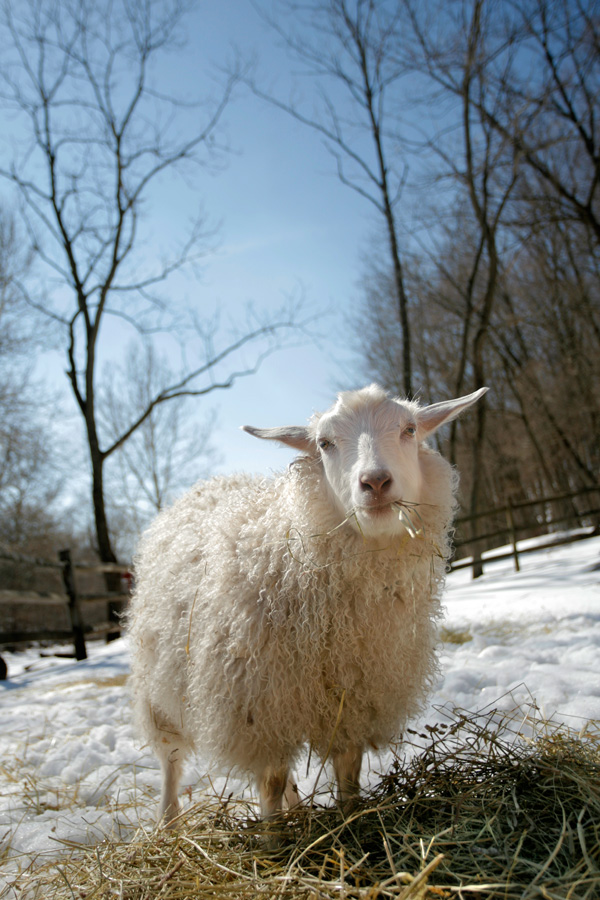
photo, Craftzine, here.
Have you ever bought a cashmere sweater, only to have it pill up impossibly on the very first day?
Have you ever wondered how manufacturers can sell $69 cashmere sweaters, when such products used to run in the hundreds of dollars?
Cashmere—the coat of the cashmere goat--has been a luxury fiber for almost three hundred years. The last ten years have seen an influx of cheap cashmere into world clothing markets.

isn’t she cuuute? Link, here.
The good news is, cashmere is more accessible to many of us. It’s even showing up in thrift stores.
The bad news is, unless we know what we’re paying for, it’s possible to be very disappointed in a cashmere purchase.
Here are some facts about cashmere that can help us make informed buying decisions (see my sources at the bottom of post).
- Whereas cashmere production originated in India in the 1700s and had spread to France and Scotland,
- Today, China has become the world’s largest producer of cashmere.
- Quality varies according to width and length of fibers. Width determines softness, while length determines strength. Long, thin fibers are the best quality and will get softer over time.

Photo from Lookchina, here.
Test for Quality
- Rub the surface with your fingers. Poor quality cashmere will pill almost immediately.
- Crush the fabric in your hand. Fewer wrinkles=better quality.
- Gently pull the garment; good quality springs back to its original shape.
- Look for pure fibers or wool blends only. Blends with synthetics can indicate that poorer quality cashmere was used.
Pashmina
“Pashmina” is not a fiber separate from cashmere and is used to mislead consumers into thinking they’re getting cashmere. The word comes from the Persian word for wool—Pashm. A garment whose fiber is labeled as “pashmina” in the U.S. is breaking federal regulations that state the exact content of cashmere must be disclosed.
Care of Cashmere
Knit cashmere should be hand-washed.
If you should buy less-than-great quality cashmere, and it pills up, try an inexpensive battery-powered fabric shaver or a sweater comb.
Recent Problems with Cashmere Production
Mislabeling is a growing problem for U.S. retailers.
In the early 2000s, when luxury items were at a premium globally, cashmere was “democratized” and manufacturers creating all sorts of new, accessible products.
However, increased demand for fiber has resulted in mislabeling and items being sold as cashmere when they may actually be blended with other, inferior fibers. These stocks are being sold to Chinese sweater mills as well to Western buyers. As a result, more mislabeled garments are expected to be found in retail stores.
The quality of cashmere from China is a growing concern. In the mid 2000s it was reported that cashmere coming out of China was not regulated well and there were many reports of crossbreeding the cashmere goats with other goats, and mixing cashmere with wool.
The Bottom Line
Before you drop hard-earned money in any amount on a cashmere garment, know as much as you can about what you’re getting. There’s nothing wrong with a lower-priced, lower-quality garment as long as consumers aren’t misled about what they’re buying.
From: Cashmere and Camel Hair Manufacturers’ Institute FAQ’s and U.S. Better Business Bureau article on Federal Trade Commission Regulations on Cashmere Labeling. Albany Times Union, Dec, 25, 2004; “Italy Faces Mounting Threats to Cashmere,” Women’s Wear Daily Dec. 6, 2005.
sallymandy



